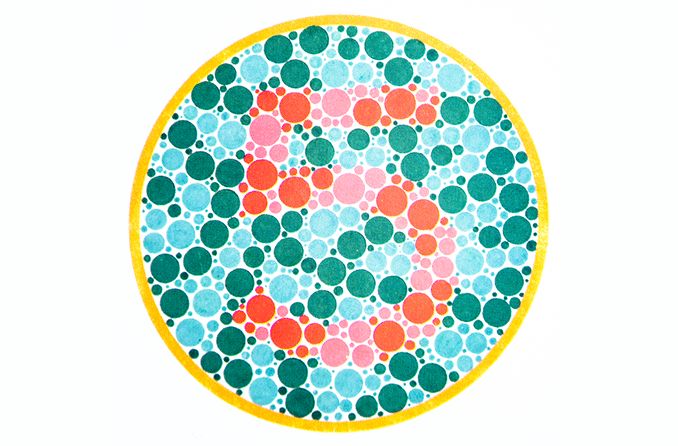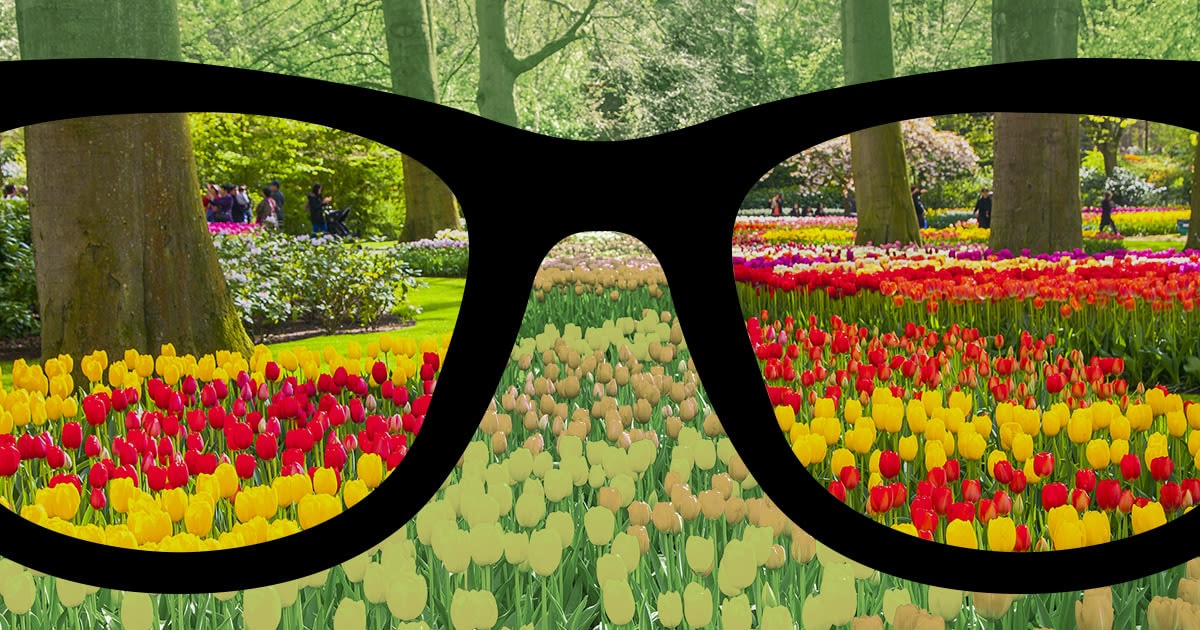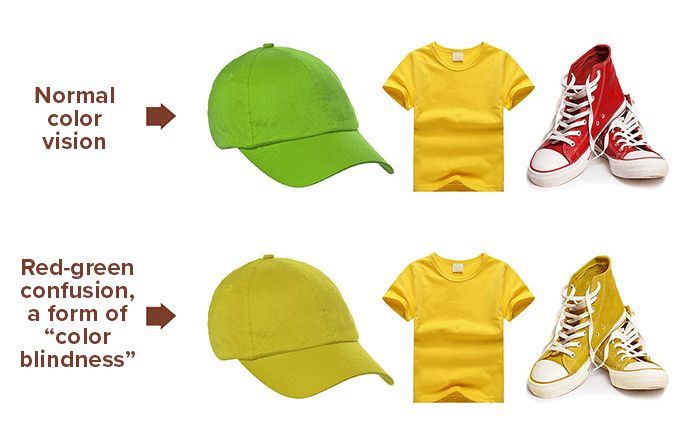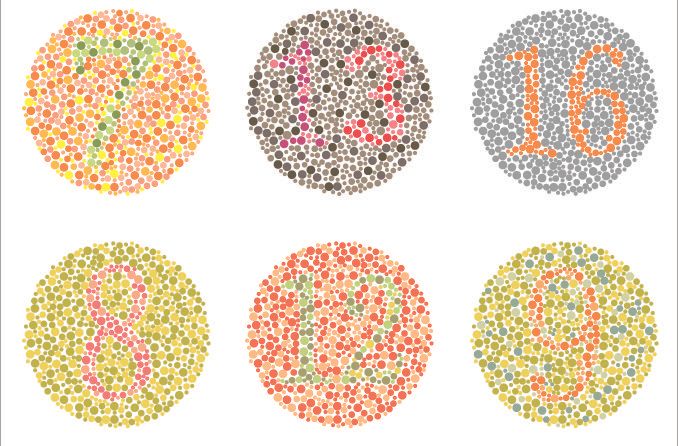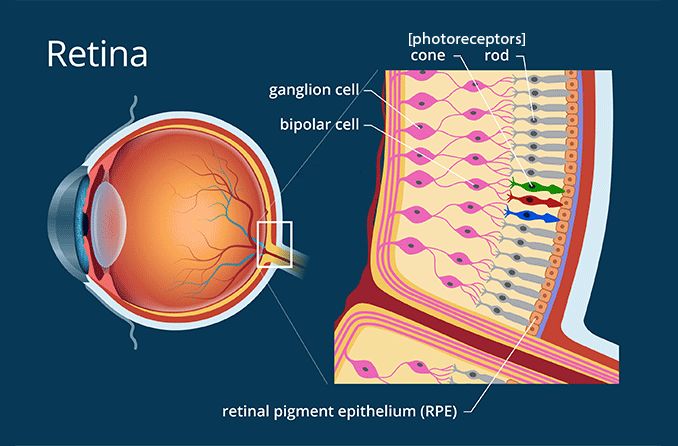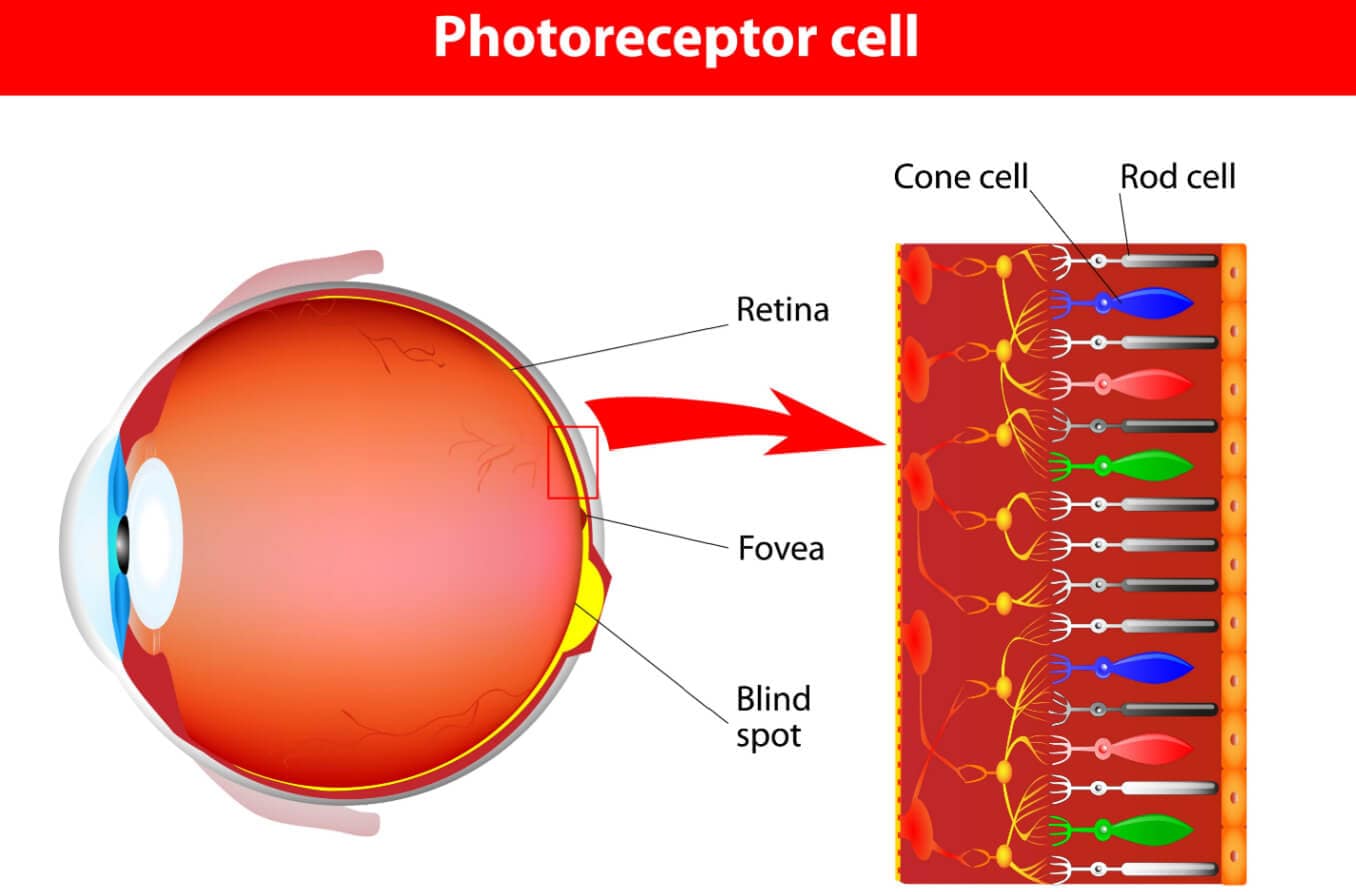Red-green color blindness is the most common variety of color deficiency in humans. It happens to people who can’t see shades of red and green the same way as people with normal color perception do.
Most of us experience color about the same way: Our eyes capture light in certain wavelengths. Then, the brain interprets these waves as shades of red, green and blue. But a few people have trouble seeing red and green, and some see no red or green at all. Otherwise, their vision works pretty much the same as anybody else’s.
About 8% of men and 0.5% of women worldwide have trouble perceiving color accurately. Almost all of those problems are in red-green perception. Indeed, seeing reds and greens comes so naturally to humans that problems with color perception pose a bunch of questions:
What’s the definition of red-green color blindness?
What causes red-green color deficiencies?
What are the most common varieties of red-green color blindness?
What does a red-green color deficiency look like?
How do doctors confirm red-green color blindness?
Is there any treatment or cure for red-green color deficiencies?
Let’s work our way through some quick answers to these questions.
What does red-green color blind mean?
Healthy human eyes detect three colors: red, green and blue. Photoreceptor nerves in the retina called cones perceive these hues and send signals to the brain, which converts them into color vision. You might see color perception described four ways:
Trichromatic – Seeing all three colors (normal vision).
Dichromatic – Perceiving two colors but not the third.
Anomalous trichromatic – Perceiving three colors but with deficiencies in red, green or blue.
Monochromatic – Perceiving no colors.
Some people are born with no cones to perceive red or green, while others just have a shortage of these cones. A few people have blue-yellow color blindness and a very small number of humans see the world with no color at all.
Diseases and eye damage might also cause color perception problems. We’ll talk about the causes of red-green color deficiencies next.
Where does red-green color blindness come from?
Most red-green colorblind people inherit it from their parents. Men get the condition far more often than women do because of differences in how parents pass their genes to their kids.
Basically, genes travel from parent to child on chromosomes. In humans, chromosomes called “X” and “Y” determine whether we are born male or female. Males have one X chromosome and one Y chromosome (XY), while females have two X chromosomes (XX).
Red-green color blindness travels exclusively in the X chromosome. This makes red-green color blindness much more likely to happen to males because:
Boys inherit their single X chromosome only from their mothers. If that chromosome has the genes for red-green color deficiencies, they inherit the condition.
Girls inherit their two X chromosomes from their mothers and fathers. Thus, Mom and Dad both have to carry the genes for red-green color blindness before they can pass it to their daughters. Therefore, girls are far less apt to be born with the deficiency.
The genes for the other varieties of color blindness (blue-yellow and complete) travel on different chromosomes, so these problems happen to women and men at the same rate.
Of course, genes aren’t the only cause of color deficiencies. Other causes can include:
Eye injuries
Eye diseases such as glaucoma and macular degeneration
Nervous system diseases such as Parkinson’s, Alzheimer’s and multiple sclerosis
Medications such as tiagabine (an anti-seizure drug) and Plaquenil (for rheumatoid arthritis and other autoimmune diseases)
Environmental pollutants
What are the four types of red-green color blindness?
Red-green color deficiencies come in four varieties based on how much of each color people perceive:
Red-blind (protanopia) – Red can’t be seen.
Green-blind (deuteranopia) – Green can’t be seen.
Red-weak (protanomaly) – Some red is visible; green and blue are normal.
Green-weak (deuteranomaly) – Some green is visible; red and blue are normal.
Now, let’s dig a bit deeper into these categories of red-green color deficiency.
Dichromatic color blindness: protanopia and deuteranopia
People with protanopia have no cones to perceive red. All their color perception comes in shades of green and blue.
With deuteranopia, people have no cones to perceive green. Everything they see is in shades of green and blue. You might also see these conditions called protan color blindness and deutan color blindness.
Anomalous trichromatic color weakness: protanomaly and deuteranomaly
Protanomaly means people have fewer cones for perceiving red. Deuteranomaly points to fewer cones to see green. These conditions cause slight to moderate differences in color perception.
SEE RELATED: What are the different types of color blindness?
What does red-green color blindness look like?
It’s a bit difficult to imagine a color deficiency if you have normal vision.
People who can’t see red or green might perceive things the rest of us would think of as murky green with some blue and yellow tones. People with red-green color blindness also have difficulty making out the differences between pale shades. And they tend to confuse orange and red tones.
If you’re interested in how people with color deficiencies see the world, check out this color-blindness simulator.
What kinds of tests detect red-green color blindness?
Eye doctors have a series of easy tests that reveal whether people have trouble perceiving red, green or other colors.
Typically, these color blind tests fill a circle with a bunch of dots in all sorts of sizes. Most of the dots have similar shades, but a few of them are in a contrasting hue. These contrasting colors look like a number to somebody with normal color vision. But somebody with a color deficiency sees only a faint number or no number at all.
A more sophisticated test has somebody align a series of colored disks in a certain order. People with color perception problems have a hard time getting this order right. The degree of inaccuracy in their test results shows how much color they’re missing. This helps eye doctors create a strategy to deal with their patients’ color perception issues.
Are red-green color deficiencies treatable or curable?
Red-green color blindness that’s inherited from parents is essentially fixed. It does not get better or worse over a person’s lifetime. Other kinds of color deficiencies from injuries or diseases could get worse over time depending on a doctor’s success at treating those issues.
Thus, red-green color blindness is not generally curable. Gene therapy may one day enable doctors to restore red-green vision — it’s been done with monkeys in a lab — but science hasn’t figured out how to do the same for humans.
Until then, products such as colorblind contacts or colorblind glasses may help filter the light waves reaching the retina. This can improve the ability to distinguish between some color hues, but it can’t restore full color vision.
If you have trouble perceiving colors like red and green, set up an appointment with an eye doctor and talk things over. Your doctor can give you a comprehensive eye exam, then connect you with the best resources for dealing with red-green color blindness.
MORE INFORMATION: Tips for better living with color blindness
